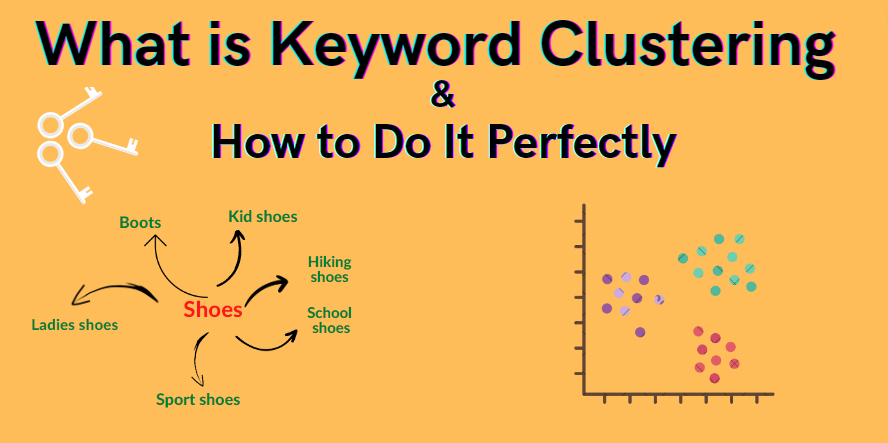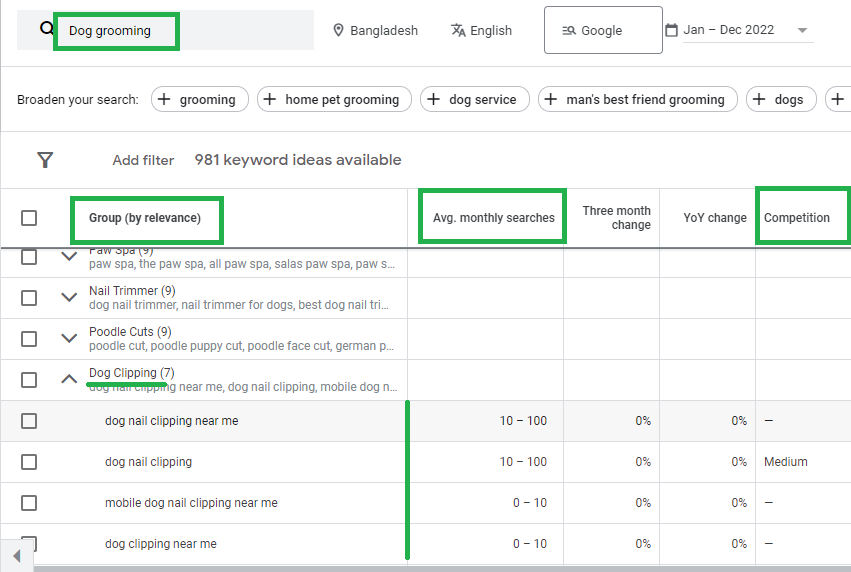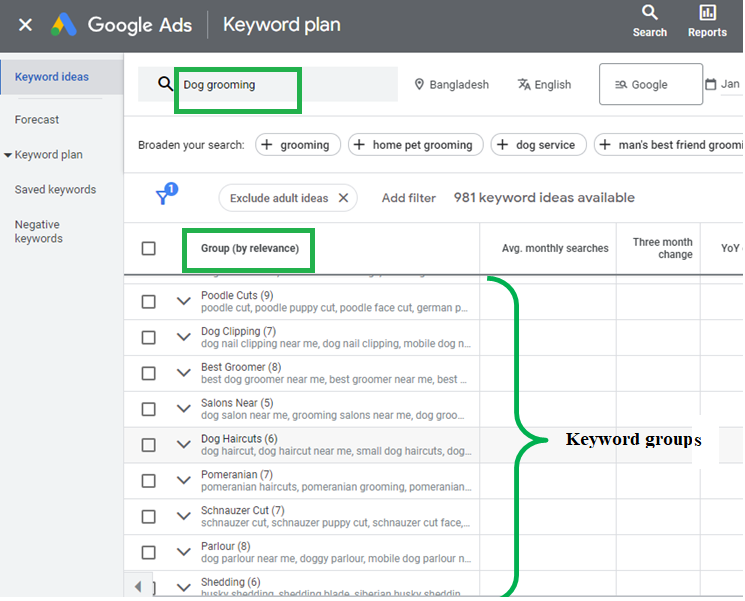
What is Keyword Clustering and How to Do It Perfectly
Table of Contents
What is keyword clustering?
When you are optimizing your website for search engine ranking to get traffic, one of the most important things you can do is to focus your website’s content around the multiple keywords users are searching for.
It is an important aspect of SEO improvement. To do this, you need to use keyword clustering.
Then, what is keyword clustering?
Keyword clustering is the process of grouping related keywords to focus on a website’s content instead of focusing on one or two keywords.
Related keywords are keywords that are closely associated with the main keyword.
Generally, user search intent of a keyword covers a broad area that includes the user’s implicit and explicit intentions.
So, while you are going to write content to answer a search query you need to optimize the content with multiple keywords focusing on your main keyword.
Consequently, your content will meet the user intent completely.
If you focus your content on one keyword, your readers will go to another site to fulfill their needs.
So, you will lose traffic and ranking.
Keyword clustering is one of the best methods that can certainly provide you with a perfect solution to this issue.
For example, if you’re selling shoes, you might include keywords such as “women’s shoes”, “shoes for boys”, “sports shoes”, “kid shoes”, “school shoes” etc.
You need to optimize the content with all the variations of your main keyword.
By doing this, you are telling the search engines that these keywords are relevant to support the main keyword and they cover the interest of the users.
This can help you rank your content higher for more keywords in search engine results pages (SERPs) and improve your website’s visibility and traffic.
How to do keyword clustering?
Before going to start the process of keyword clustering, you need to identify first the main topic and subtopics that are relevant to your niche.
Here are five steps to create keyword clustering.
- Collect related keywords
- Pre-process the keywords
- Divide your related keywords into several groups
- Create and optimize a pillar page using keyword groups
- Organize all keyword clusters to compose the pillar page
Let’s discuss this process step by step.
What is Keyword Clustering and How to Do It Perfectly
Collect related keywords
The first step in keyword clustering is to find related keywords focusing on the main theme.
This can be done by brainstorming or researching your target audience and industry to identify commonly used terms and phrases.
It is a manual process.
You can also find related keywords using keyword research tools like Google Keyword Planner or similar tools like Moz Keyword Explorer, Semrush tools, Ahrefs Keywords Explorer tools, and more.
Among them, Google Keyword Planner tool is free and the best to me to generate related keywords.
These tools are able to provide you with huge related keyword ideas.
These keywords can be related to the main theme, specific subtopics, or related terms that users might search for.
Thus, you can use a spreadsheet to make a list with the collected potential related keywords for your next analysis.
Pre-process the keywords
It is just a filtering process to collect refined keywords. In this step of your keyword collection, remove any duplicates, irrelevant and unnecessary keywords from your list and perform any necessary cleaning or normalization of the data.
This process will generate a narrow list of keywords that are almost ready for analysis.
Divide your related keywords into several groups
Since you have collected a list of refined related keywords, you can now apply keyword clustering to divide the keywords into several groups based on their relevance and relationship to the topic.
To do this, first import your keywords into a keyword analysis tool, like Google Keyword Planner. Then, use the tool to look at the search terms that are ranking easily for those keywords.
Study monthly searches and competition of each keyword and how much money each keyword has generated.
All the metrics will help you to reach a conclusion for making keyword clustering.
What is Keyword Clustering and How to Do It Perfectly

This step, in fact, groups related keywords together based on their relevance and relationship that covers a topic or specific subtopics with similar intent.

There are some keyword clustering tools available on the internet. These automated tools can certainly save your time and labor.
But in this post, I am encouraging you to apply this technique manually as much as possible.
.
Create and optimize a pillar page using keyword groups
As you have made several keyword clusters, it is time to integrate them into your content.
The target of the mission is to create more focused and relevant content.
The integration of these keyword clusters will build a pillar page that covers a large area of the topic on a single page.
It includes a broader set of keywords to meet all aspects of the topic.
Use the keywords from your keyword groups to optimize the pillar page.
This includes placing them in the title, headings, and body of the content, image alt tags as well as in meta tags and other elements of the website.
Due to optimizing the page well, search engines can more easily understand the topic, and relevance of the content and rank it accordingly.
Organize all keyword clusters to compose the pillar page
One way to organize keyword clusters on a page is to place the group of related keywords together in subheadings or sections, and to use those keywords prominently in the text.
For example, if the main topic of the page is “dog grooming,” the page could have sections on “dog grooming tools,” “dog grooming tips,” and “dog grooming services.”
Each of these sections could include relevant keywords, such as “brush,” “nail clipping,” and “professional grooming.”
In this way, you can build a long-form pillar page about “dog grooming” where you should touch upon every subtopic related to ‘dog grooming’ without doing too much details.
You can reach in-depth of the topic to cover all aspects in all subtopics.
Thus, keyword clusters help to associate relevant and semantically-related groups of words to a page.
For the target of building topic authority, you need to use internal links to connect the topic with the subtopic pages.
Moreover, using header tags (H1, H2, etc.) can help organize the content and signal to search engines which keywords are most important on the page.
It’s also important to make sure that the keywords used are relevant to the topic of the page and not over-optimized.
Final Thought
Keyword clustering is a powerful technique that can help to improve SEO by organizing and optimizing content for relevant keywords.
By grouping related keywords together, it allows to create content that is optimized for multiple keywords, rather than just one or two.
This can help to increase the visibility of a website in search engine results, as well as attract more relevant traffic to the site.
The content writer should apply this concept of keyword optimization to fit their content with the recent search engine updates and leverage more benefits.
What is Keyword Clustering and How to Do It Perfectly
Related Post :
How to do keyword research step by step
How to do keyword research manually
Keyword research in SEO
